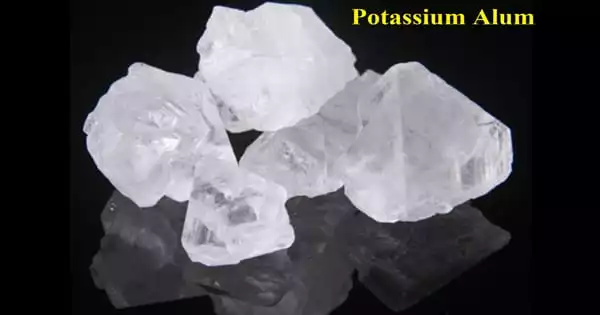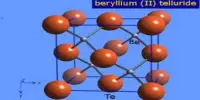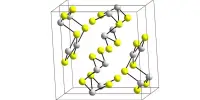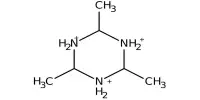Potassium alum, also known as potassium aluminium sulfate, is a chemical substance that is the double sulfate of potassium and aluminum, having the formula KAl(SO4)2. It is a chemical compound that is commonly utilized as potassium sulfate dodecahydrate. It is double salt that is extensively used in medicine and water treatment. It is most usually seen as the dodecahydrate, KAl(SO4)2·12H2O. It is a key member of alum, which is one of the most commonly utilized coagulants in water treatment, particularly in low-colored waters.
It crystallizes in neutral solution as an octahedral structure and as a cubic structure in alkali solution, with a space group of P a 3 and a lattice value of 12.18Å. The compound is the most important member of the generic class of compounds called alums, and is often called simply alum.
Potassium alum is commonly used in water purification, leather tanning, dyeing, fireproof textiles, and baking powder as E number E522. It also has cosmetic uses as a deodorant, as an aftershave treatment and as a styptic for minor bleeding from shaving.
Properties
- Molar Mass: 258.192 g/mol (anhydrous) and 474.37 g/mol (dodecahydrate)
- Density: 1.725 g/cm3
- Melting Point: 92 to 95 °C (198 to 203 °F; 365 to 368 K)
- Boiling Point: 200 °C (392 °F; 473 K)
- The shape of the crystal: Octahedral
- Colour of the crystal: Colourless
- Solubility in water: Soluble
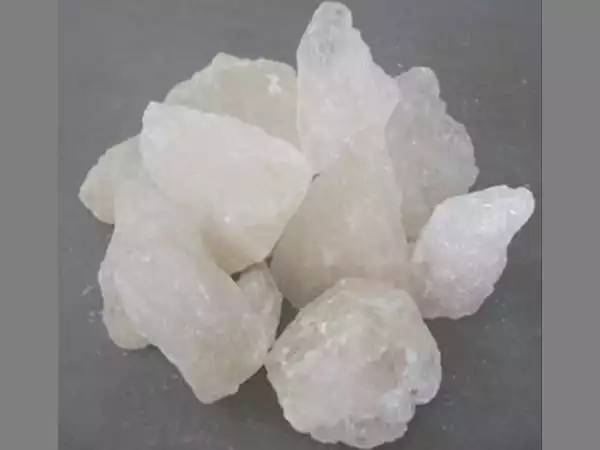
Characteristics
Potassium alum crystallizes as regular octahedra with flattened edges and is very soluble in water. The solution is slightly acidic and harsh to the taste. When an alum solution is neutralized with potassium hydroxide, alumina Al(OH)3 begins to separate.
When heated to nearly red temperatures, it produces a porous, friable substance known as “burnt alum.” It fuses at 92°C (198 °F) in its own crystallization water.
Preparation
Potash alum is typically derived from the mineral alunite. However, potassium alum is now now produced industrially. One of the most typical techniques of preparation is to dissolve potassium sulfate in concentrated aluminum sulfate solution. Potassium chloride can be used instead of potassium sulfate if the sulfate contains more iron.
Aluminium sulfate is frequently obtained by treating minerals such as alum schist, bauxite, and cryolite with sulfuric acid. Crystallization is typically used to generate a condensed solution having equimolar amounts of potassium sulphate and aluminum sulphate. The crystalline substance that forms is acidic and colorless.
Al2(SO4)3(aq) + K2SO4(aq) → K2SO4.Al2(SO4)3.24H2O(s)
To prevent the salt from hydrolyzing, a little amount of diluted sulfuric acid is employed to dissolve aluminium sulfate in warm water. When a two-salt solution is allowed to crystallize to some extent in the manufacture of potash alum, a double layer forms. Alum is given a unique sequence of twin salts. Meanwhile, “neutral aluminum” is created by combining an aluminum solution with sodium carbonate.
Two beakers (250 mL), a funnel, a funnel kiosk, glass-rod and wire-gauzes, a washing bowl, a tripod stand, a china dish, sulfate of aluminum, potassium, and dilute sulfuric acid will be required in the lab.
Natural occurrence
Potassium alum dodecahydrate occurs in nature as a sulfate mineral called alum-(K), typically as encrustations on rocks in areas of weathering and oxidation of sulfide minerals and potassium-bearing minerals.
In the past, potassium alum has been obtained from alunite [KAl(SO4)2·2Al(OH)3], mined from sulfur-containing volcanic sediments. Alunite is an associate and likely potassium and aluminium source. It has been reported at Vesuvius, Italy; east of Springsure, Queensland; in Alum Cave, Tennessee; Alum Gulch, Santa Cruz County, Arizona and the Philippine island of Cebu.
To obtain alum from alunite, it is calcined and then exposed to the action of air for an extended period of time. During this exposure, it is kept constantly wet with water, eventually falling to a very fine powder. The powder is then lixiviated with hot water, the liquid is decanted, and the alum crystallizes.
The undecahydrate also occurs as the fibrous mineral kalinite [KAl(SO4)2·11H2O].
Uses
- Fire Retardant – use for textiles, wood and paperless flame resistance is a fire-retardant.
- Tanning – For leather tanning, potassium alum is used to extract moisture from the hide and avoid rotting. Alum is not covered and can be washed out, as compared to tannic acid.
- Iron and Steel Dissolving – This aluminium solution has the property that steels are dissolved without affecting aluminium or base metals.
- Gourmet Food – It may be an acidic component in baking powder to provide a second leavening step at high temperatures.
